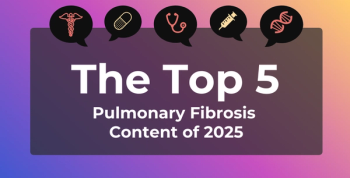
Heart Failure Undertreated in Duchenne Muscular Dystrophy
With improved survival becoming more common among individuals who have Duchenne muscular dystrophy (DMD), cardiomyopathy is also increasing in prevalence among this population.
New data from a 20-year observational study show that among individuals who have
“In this vulnerable population with a rare, inherited disease, conducting randomized controlled intervention trials is challenging,” they write, “and despite the risk of various sources of bias, cohort studies are needed to understand the effect of interventions and to generate hypotheses that can be tested in controlled trials.”
With their findings also showing that lower left ventricular ejection fraction (LVEF) is independently linked to death at a younger age in the setting of DMD—older age showed only a weak association with LVEF reduction—they underscore that future research needs to focus on identifying and ameliorating predictors of LVEF decline.
This retrospective observational research appeared in a recent issue of
There were 430 EKGs from the 67 patients, and the baseline study visit was considered the first visit when transitioning to adult care. The mean (SD) patient age at first visit was 19.1 (3.9) years, and at last visit, 27.8 (6.6) years. Mean LVEF at first visit was 47.1% (10.2%) compared with 37.5% (12.4%) at the last visit.
For the study duration, nocturnal home mechanical ventilation (HMV) and angiotensin-converting enzyme (ACE) inhibitors were the most common HF treatments, increasing from 50.7% and 49.3% to 88.1% and 836.6%, respectively; beta-blockers had the next highest jump, from 14.9% to 53.7% of the study population by the final visit. Patients started ventilation at a mean age of 20.0 (4.8) years and had a percutaneous endoscopic gastrostomy (feeding tube insertion) by age 32 (47.8) years.
Twenty-eight of the 67 patients were deceased when this study started, and of the 60.7% for whom case of death was known, a cardiac-related cause of death was seen in 53%; the mean age at death was 29.2 (6.4) years vs an overall median (IQR) survival of 33 (25-40) years. Of those who had a cardiac-related death, their LVEF was 11 (95% CI, –21.1 to –0.9; P = .035) percentage points lower at time of death (24.2% [11.55] vs 35.2% [8.2%]) and at least 71% were taking ACE inhibitors (71.4%) or beta-blockers (76.4%) or were on HMV (89.3%).
For predictors of change in LVEF, the investigators saw from the EKG data that older aged had a weak association with lower LVEF (P = .065), but that forced vital capacity, measures of respiratory failure (arterial partial pressure of carbon dioxide, bicarbonate concentration, and nocturnal transcutaneous partial pressure of carbon dioxide), and type of dystrophin mutation had no association with LVEF. ACE inhibitors and beta-blockers (both P = .002) were shown to be independent negative predictors of change in LVEF.
“Annual echocardiography from the age of 10 years is recommended in DMD and the use of ACE inhibitors and beta-blockers as soon as abnormalities are detected,” the study authors wrote. “However, there is little evidence to guide the management of heart failure in DMD.”
They add that due to the increased survival of patients living with DMD, the aging of patients necessitates more extensive follow-up of comorbidities.
“Close collaboration between neuromuscular centers treating DMD patients and cardiologists is important,” they concluded, “and international studies of HF therapy in DMD are needed to determine specific recommendations.”
Potential limitations on their findings include its small size and retrospective observational nature, and their inability to model a potential association between type of ACE inhibitor and LVEF.
Reference
Lechner A, Herzig JJ, Kientsch JG, et al. Cardiomyopathy as cause of death in Duchenne muscular dystrophy: a longitudinal observational study. ERJ Open Res. 2023;9(5):00176-2023. doi:10.1183/23120541.00176-2023
Newsletter
Stay ahead of policy, cost, and value—subscribe to AJMC for expert insights at the intersection of clinical care and health economics.







































